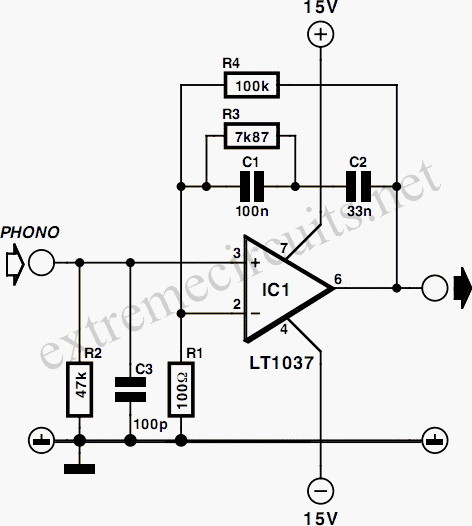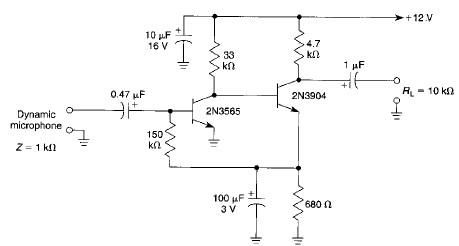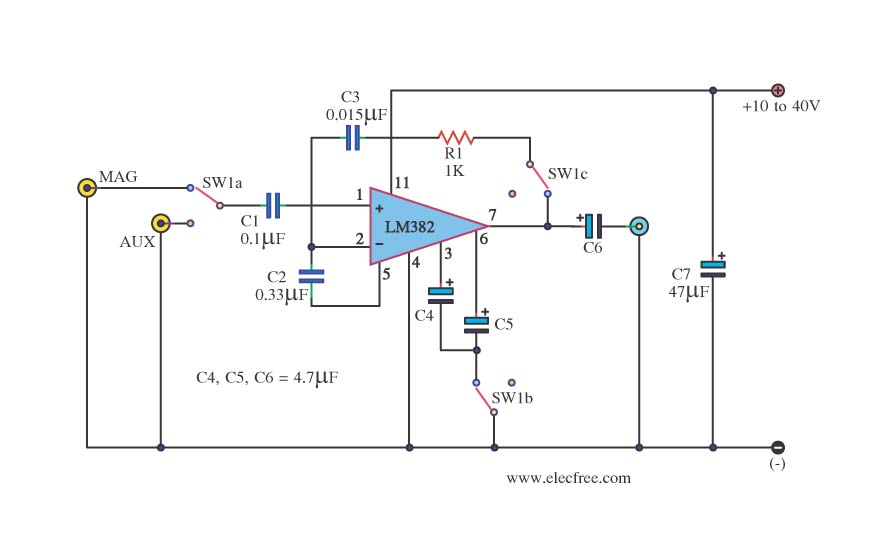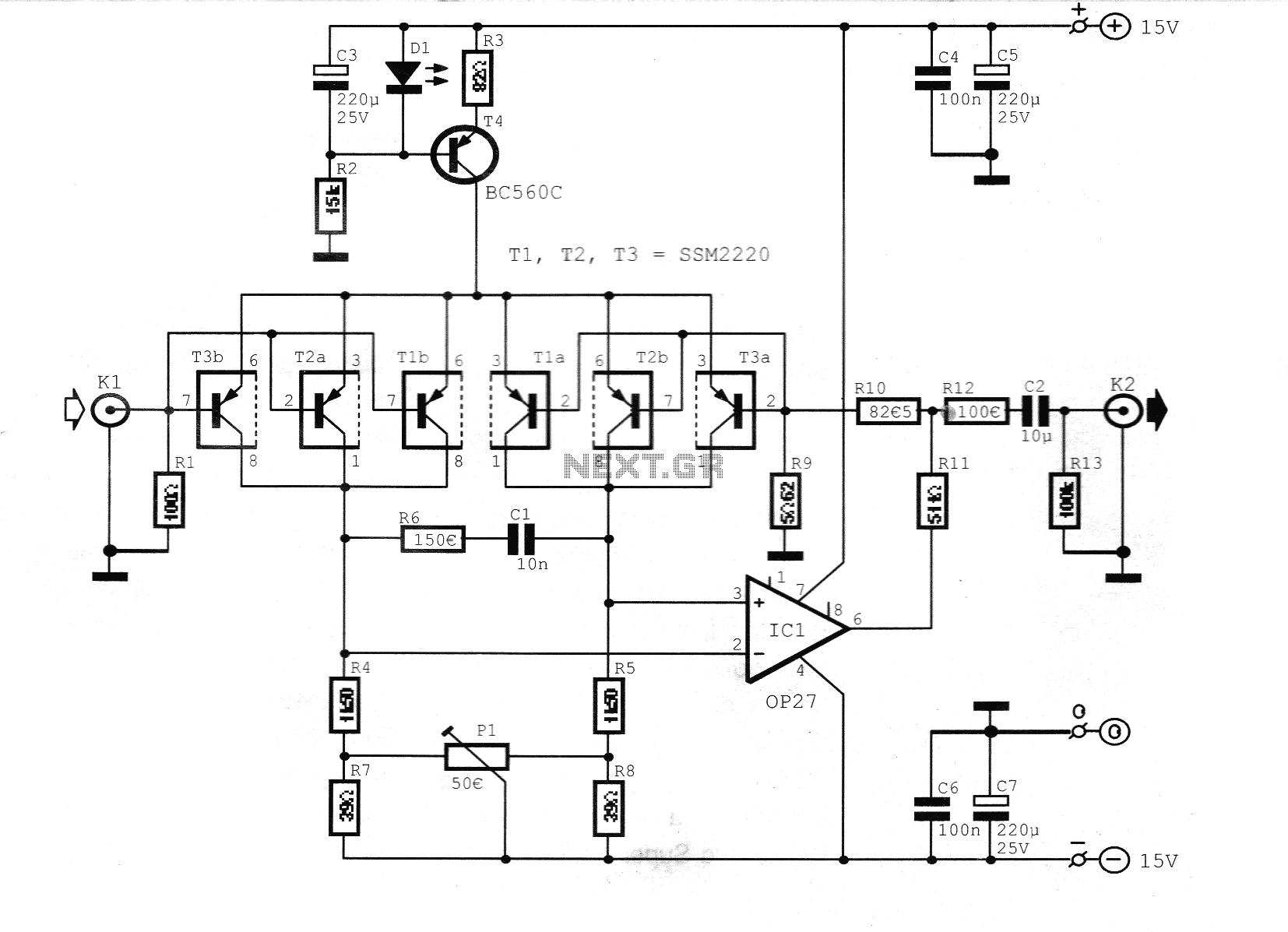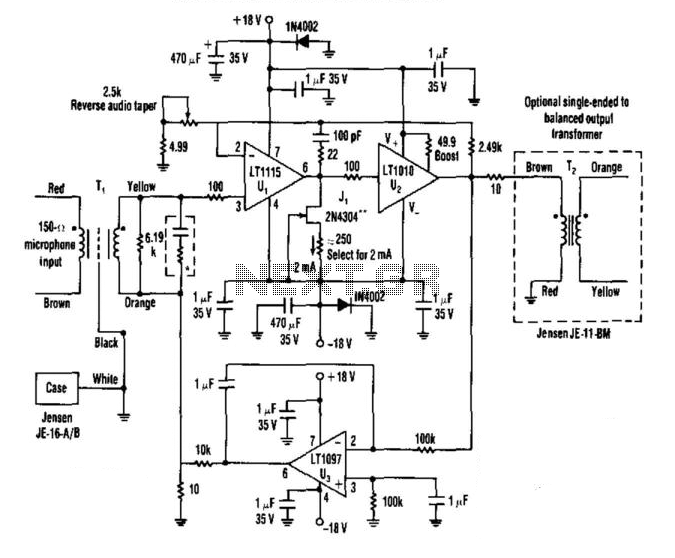
Understanding the Music Man Stingray 2-band preamp
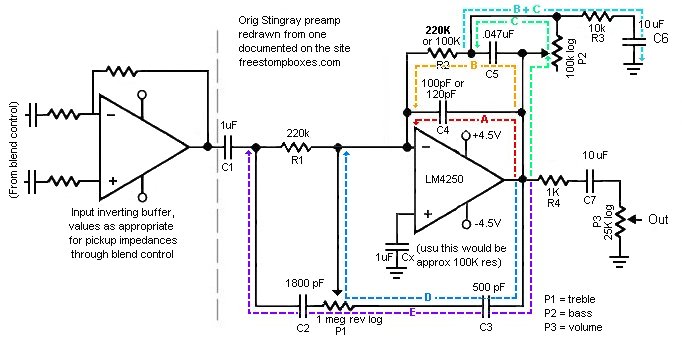
The schematic presented is for the original Music Man Stingray bass guitar preamp. It operates on a 9V DC power supply, and the voltage divider section has been omitted.
The Music Man Stingray bass guitar preamp circuit is designed to amplify the low-level signals generated by the guitar's pickups. The preamp typically consists of several key components, including operational amplifiers, resistors, capacitors, and a power supply input. The choice of a 9V DC power supply is common in many audio applications, providing a balance between adequate headroom and low noise.
At the input stage, the preamp circuit typically includes a high-impedance buffer to ensure that the signal from the guitar pickups is not loaded down. This is often implemented using an operational amplifier configured as a non-inverting amplifier. The gain of this stage can be adjusted by selecting appropriate feedback and input resistors.
Following the input stage, additional filtering capacitors may be included to remove unwanted high-frequency noise and to stabilize the power supply. The circuit may also feature tone control elements, such as passive RC networks, allowing the user to adjust bass, midrange, and treble frequencies according to personal preference.
The output stage of the preamp is designed to drive the subsequent amplification stages or effects pedals. This stage may also utilize an operational amplifier to ensure that the output signal maintains a low output impedance, facilitating better signal transfer to the next stage in the audio chain.
In summary, the schematic for the Music Man Stingray bass guitar preamp illustrates a well-thought-out design that emphasizes signal integrity, user control over tonal characteristics, and compatibility with standard audio equipment. The omission of the voltage divider section suggests a focus on simplifying the schematic for clarity, while still retaining the essential functionality of the preamp circuit.The schematic here is of the original Music Man Stingray bass guitar preamp. It runs off 9VDC and I have left off the voltage divider part of the.. 🔗 External reference
The Music Man Stingray bass guitar preamp circuit is designed to amplify the low-level signals generated by the guitar's pickups. The preamp typically consists of several key components, including operational amplifiers, resistors, capacitors, and a power supply input. The choice of a 9V DC power supply is common in many audio applications, providing a balance between adequate headroom and low noise.
At the input stage, the preamp circuit typically includes a high-impedance buffer to ensure that the signal from the guitar pickups is not loaded down. This is often implemented using an operational amplifier configured as a non-inverting amplifier. The gain of this stage can be adjusted by selecting appropriate feedback and input resistors.
Following the input stage, additional filtering capacitors may be included to remove unwanted high-frequency noise and to stabilize the power supply. The circuit may also feature tone control elements, such as passive RC networks, allowing the user to adjust bass, midrange, and treble frequencies according to personal preference.
The output stage of the preamp is designed to drive the subsequent amplification stages or effects pedals. This stage may also utilize an operational amplifier to ensure that the output signal maintains a low output impedance, facilitating better signal transfer to the next stage in the audio chain.
In summary, the schematic for the Music Man Stingray bass guitar preamp illustrates a well-thought-out design that emphasizes signal integrity, user control over tonal characteristics, and compatibility with standard audio equipment. The omission of the voltage divider section suggests a focus on simplifying the schematic for clarity, while still retaining the essential functionality of the preamp circuit.The schematic here is of the original Music Man Stingray bass guitar preamp. It runs off 9VDC and I have left off the voltage divider part of the.. 🔗 External reference
